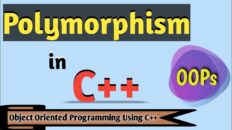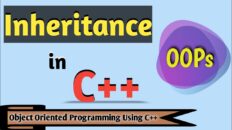Access specifiers, namely public, private, and protected, play a crucial role in defining the access levels of class members within C++ programs. Join us as we provide a detailed explanation of each access specifier and its significance in object-oriented programming (OOP).
Discover what access specifiers are and how they control the accessibility of class members from within and outside the class hierarchy. Learn about the public access specifier, which allows unrestricted access to class members, and the private access specifier, which restricts access to class members within the same class.
Explore the protected access specifier, which provides access to class members within the same class and its derived classes, fostering encapsulation and data hiding. Gain insights into the practical application of access specifiers in designing secure and maintainable C++ code.
Whether you’re a beginner learning the basics of object-oriented programming or an experienced programmer seeking to enhance your understanding of access control in C++, this video offers valuable insights and practical examples.
Timestamps:
00:00 – Namaskar Dosto!
00:30 – Access Specifiers in C++
00:53 – public specifier
01:42 – private specifier
01:57 – protected specifier
02:37 – Program for public,private,protected specifiers
08:15 – Thanks for Watching:)
“

Access the notes here: https://elementrix.in/
#c++
#oops
#objectorientedprogramming
#programming
#accessspecifiersinc++
OOPs in C++




Add comment